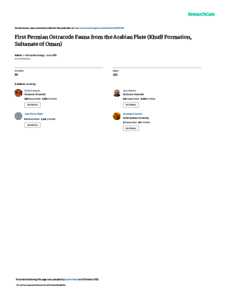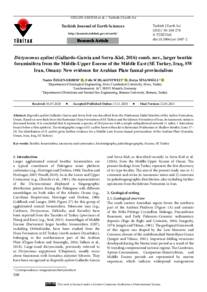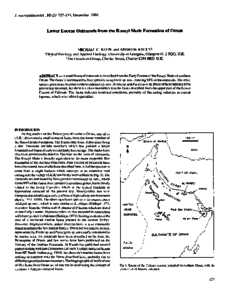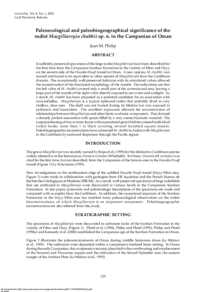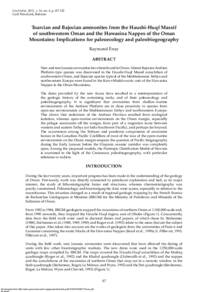Document
First Permian ostracode Fauna from the Arabian Plate (khuff Formation, Sultanate of Oman).
Identifier
DOI:10.2307/1486111
Source
Micropaleontology. v. 45, (2) p. 163-182
Contributors
Broutin, Jean., Author
Jack Roger, Author
Platel, Jean-Pierre., Author
Al-Hashmi, Haroub., Author
Angiolini, Lucia., Author
Baud, Aymon. , Author
Bucher, Hugo., Author
Marcoux, Jean., Author
Country
United States.
City
New York
Publisher
The Micropaleontology Project.
Gregorian
1999-06-01
Language
English
English abstract
Permian ostracodes of the Arabian Peninsula are recorded for the first time. Thirty five species from the marine Khuff
Formation (Middle Permian) in Oman are presented here. Eleven species are new: Bairdia omanensis Crasquin-Soleau n. sp., Cavellina
huqfensis Crasquin-Soleau n. sp., Cavellina gerryi Crasquin-Soleau n. sp., Cavellina boomeri Crasquin-Soleau n. sp., Sulcella arabica
Crasquin-Soleau n. sp., Langaia hornei Crasquin-Soleau n. sp., Sargentina u~outersi Crasquin-Soleau n. sp., Carinaknightina braccinii
Crasquin-Soleau n. sp., Jordanites lordi Crasquin-Soleau n. sp., Hollinella (Hollinella) benzartiae Crasquin-Soleau n. sp., Hollinella
(Hollinella) martensi Crasquin-Soleau n. sp.
Nine species are attributed to described species, and the age given is Middle Permian. Brachiopods and accompanying conodonts
and foraminifera give a lower Wordian (Middle Permian) age (Angiolini et al. 1996, 1998).
The paleoecological analysis shows that the Khuff Formation was deposited in a very shallow marine, sublittoral environment under action of waves. The analysis of the relationships between the storm levels and the composition of the ostracode assemblage is in
progress, even if in first approximation, the strong variations of compositions don't seemed to be linked with this phenomenon.
The paleobiogeographic relationships are strong with the Russian Platform, the North American platform and the South China.
This could be explained by the importance of the surface current from East to West in the Paleo-Tethys realm.
ISSN
0026-2803
Category
Journal articles

